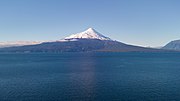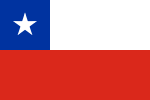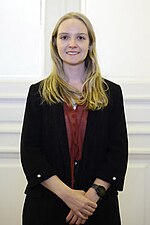Search results
Appearance
There is a page named "Osorno, Chile" on Wikipedia
- Osorno (Mapuche: Chauracavi) is a city and commune in southern Chile and capital of Osorno Province in the Los Lagos Region. It had a population of 145...37 KB (3,444 words) - 21:29, 6 February 2024
- Look up osorno in Wiktionary, the free dictionary. Osorno may refer to: Osorno, Chile, a city in Chile Osorno Province, a province of Chile Osorno (volcano)...1 KB (206 words) - 12:22, 26 January 2021
- Rubén Marcos (category Sportspeople from Osorno, Chile)Marcos Peralta (6 December 1942, at Osorno, Chile – 14 August 2006, at Osorno), known as Rubén Marcos, was a Chilean football player who played as a midfielder...5 KB (271 words) - 18:12, 22 February 2024
- Region of southern Chile. It stands on the southeastern shore of Llanquihue Lake, and also towers over Todos los Santos Lake. Osorno is considered a symbol...9 KB (759 words) - 04:50, 5 March 2024
- Provincial Osorno is a football club based in Osorno, Los Lagos Region, Chile. The club is currently playing at the third tier of the Chilean football system...19 KB (1,289 words) - 12:53, 29 June 2024
- 40 hours, with a change at Osorno). Chile has a total of 372 runways (62 paved and 310 unpaved). Important airports in Chile include Chacalluta International...212 KB (20,241 words) - 00:44, 27 June 2024
- Medialuna de Osorno)Championship of Chilean Rodeo. It hosted the 2006 Davis Cup matches of Chile against Slovakia and the 2009 Davis Cup against Austria. In Osorno, Chile, the medialuna...3 KB (325 words) - 20:19, 27 December 2023Ambrosio Bernardo O'Higgins y O'Higgins, 1st Marquess of Osorno (c. 1720 – 19 March 1801) born Ambrose Bernard O'Higgins (Ambrós Bearnárd Ó hUiginn, in...25 KB (3,029 words) - 04:09, 8 June 2024
- merchants to Chile, contributing to the nascent country's economic and industrial development. The German colonization of Valdivia, Osorno and Llanquihue...36 KB (4,011 words) - 09:48, 5 May 2024
- Los Lagos Region of Chile)Lakes') is one of Chile's 16 regions, which are first order administrative divisions, and comprises four provinces: Chiloé, Llanquihue, Osorno and Palena. The...10 KB (611 words) - 01:52, 20 May 2024Paula Narváez (category People from Osorno, Chile)nominee of the Socialist Party in the 2021 Chilean presidential election. Paula Narváez was born in Osorno, Los Lagos on 22 May 1972, and spent her childhood...15 KB (1,251 words) - 10:46, 12 May 2024Cañal Bajo Carlos Hott Siebert Airport (category Buildings and structures in Osorno, Chile)airport serving Osorno, a city in the Los Lagos Region of Chile. The airport is 5 kilometres (3 mi) southeast of the city. Transport in Chile List of airports...2 KB (135 words) - 17:54, 16 July 2023Carlos Wiederhold, a German-Chilean from Osorno, Chile, crossed the poorly known mountain passes of the Andes from Chile into Nahual Huapi Lake. He was...50 KB (4,601 words) - 02:19, 1 July 2024Osorno Province (Spanish: Provincia de Osorno) is one of the four provinces in the southern Chilean region of Los Lagos (X). The province has an area...9 KB (683 words) - 03:31, 25 January 2023Catholic Diocese of Osorno (in Latin: Dioecesis Osornensis ) is a suffragan diocese of the archdiocese of Puerto Montt, in Chile. The diocese was established...5 KB (386 words) - 20:41, 16 November 2023
- Jorge Schwager (category Sportspeople from Osorno, Chile)Jorge Osvaldo Schwager Navarrete (born 4 July 1983) is a Chilean football manager and former player who played as either a left-back or a midfielder....4 KB (198 words) - 23:42, 26 June 2024
- Catedral San Mateo Apóstol) in Osorno, Chile is the cathedral of the Roman Catholic Diocese of Osorno. Also known simply as Osorno Cathedral, the cathedral...7 KB (211 words) - 00:03, 10 November 2023
- Beatriz Hevia (category People from Osorno, Chile)director of the Agriculture and Ranching Society of Osorno (Spanish: Sociedad Agrícola y Ganadera de Osorno). Her parents are Gerardo Hevia Hott and Loreto...4 KB (201 words) - 14:32, 9 February 2024
- Osorno Básquetbol was a Chilean basketball club based in Osorno, Los Lagos Region. The club was established on November 19, 2009. The club played in the...3 KB (159 words) - 11:22, 18 November 2022
- received the appointment of Captain-General of Chile. The last five years of his life were spent as Viceroy of Peru, with the title of Marquis of Osorno.
- ferns, flowerings plants, conifers. For example on the Volcan Osorno in south Chile after ash covers the ground: mosses spread over the ash. Small herbs












